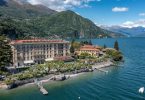MICE as in Meetings, Incentives, Conferences, Events, that is.
From the time this city hosted the UNWTO (United National World Tourism Organization) 17th General Assembly in November 2007, there seems to be no signs of Cartagena’s tourism slowing down or looking back to the old days. From the moment Colombia launched its tourism slogan, nothing seems to stop guests from peeking into a newly-reformed Colombia. Their only risk, however, is wanting to stay – aptly depicts the current tagline.
While the country keeps consolidating its position in the international leisure and business markets, holding up growth at 17 percent since the UNWTO Summit which is the highest in South America thus far, the MICE (meeting, incentive, convention, events) appeal keeps tourism out of the red. In fact, the Latin American Emerging Market Summit with over 600 participants (most of whom, politicians and world leaders) found its way to Cartagena last April 1-3. Due to the positive posturing of the city brought about by Proexport’s policy of promotion and country branding under its ‘Colombia is Passion’ slogan, Cartagena was a natural choice to host the summit.
Proexport is the organization responsible for promoting Colombia’s non-traditional exports, as well as international tourism and foreign investment. With a significant budget of $2 million, the agency has been able to actively publicize tourism abroad. Similarly, the tourism promotion fund has been bumped up from $1.5 million to $17 million in 2009. Colombia’s MICE crescendos to hosting more massive niche events as Medellin hosts the Inter-American Bank Assembly this year; while Cartagena lands the contract for holding the World Economic Forum’s regional summit next year.
Thanks to the initiatives by current President Alvaro Uribe who announced last week lower tax rates and more incentives for investment in hotels and other tourism projects. Uribe’s move makes Cartagena, once just a walled fortress that kept away the French, Dutch and English pirates, a destination of choice for more global meetings, cruise ship stops and leisure travelers.
Proexport’s Maria Jose Abuabara Arenas, assistant vice president for tourism, said: “Cartagena has been somehow ‘asleep’ in a way, although it’s truly a sun and sea destination that caters to international tourism.” Could it be that this UNESCO Historical and Cultural World Heritage Site just waited for the right moment to unveil itself as a leading tourism and industrial center (with one of the largest trade ports in the Caribbean and the northern region of South America) while the country was sorting out its problems with the cartel? Well, the moment has come.
Hotels keep mushrooming in the city. To date, there are a total of 4500 rooms in the city including 1592 luxury hotel rooms, 808 deluxe units; some 678 more rooms of 4- to 5-star class come online between 2009 and 2010. According to Arenas, Accor’s Sofitel has decided to operate the Plaza de Armas, an old house that has been renovated and fitted with a second-floor discotheque. The property has served as a convent, hospital and jail (inspiring Colombia’s most famous son, the Nobel Prize-winning writer Gabriel Garcia Marquez to pen ‘Of Love and Demons’). Of course, Sofitel previously acquired the luxurious Charleston Santa Teresa Hotel standing proud at the fort entrance, somehow marking the investment boom in Colombia. This is the only hotel in the country supported by VIRTUOSO.
Along Calle Sto. Domingo’s most famous cobbled street, Casa Pestagua Hotel Spa is located on the site declared as a historical and cultural heritage of humanity. Steep in heritage, with 11 exclusive suites boasting antiquities and pre-Colombian art, Casa Pestagua has become a favorite venue among event planners and MICE clientele booking cozy and mid-size functions.
Although 23 percent of Cartagena’s market is of American inbound, the recession has not affected business significantly. In a way that lowering hotel rates may have been the only reaction to the downturn to adapt to the demands of the market, but hotels have not run empty or vacant for long stretches. The Sofitel, Charleston, Pestagua and other luxury hotels have kept their $400/ night average rates despite today’s economy, said Arenas, adding most guests prefer to stay in Cartagena’s 4- to 5-stars, rather than the lower categories.
The trend of converting old Cartagena residences to tourism entities such as a boutique hotel or a five-star restaurant is growing. To date, over 28 houses have been remodeled through investment money generated locally, with the French or a mix basket of FDI (foreign direct investment) sources. Currently, the Marriott is doing inspections and the Hyatt chain is exploring the town of Baru with projects relative to Boca Grande’s $150 million spread. In this regard, 9 hotels in Colombia are expected to be added within a span of 5 years, with one Hyatt to open soon in Cartagena. Certainly, the Holiday Inn has plans on investing in the city following the chain executives April 2nd meeting with the governor.
The tourism bureau and Proexport are working to grow the MICE business seriously for Cartagena. “What we really want them to do, if they have a real interest is to show them the unique features of our beautiful city. We have 15 commercial offices worldwide serving them,” said Arenas alluding to last month’s special meeting with China’s vice premier who declared Colombia as a secure and safe destination for the Chinese to visit.
One question came to mind: how interesting would it be to see a destination which was once a walled fortress becoming a choice for the people of the Great Wall? Colombians may have to learn “Ni Hau Ma” fast, without awaiting economic turnaround.






















